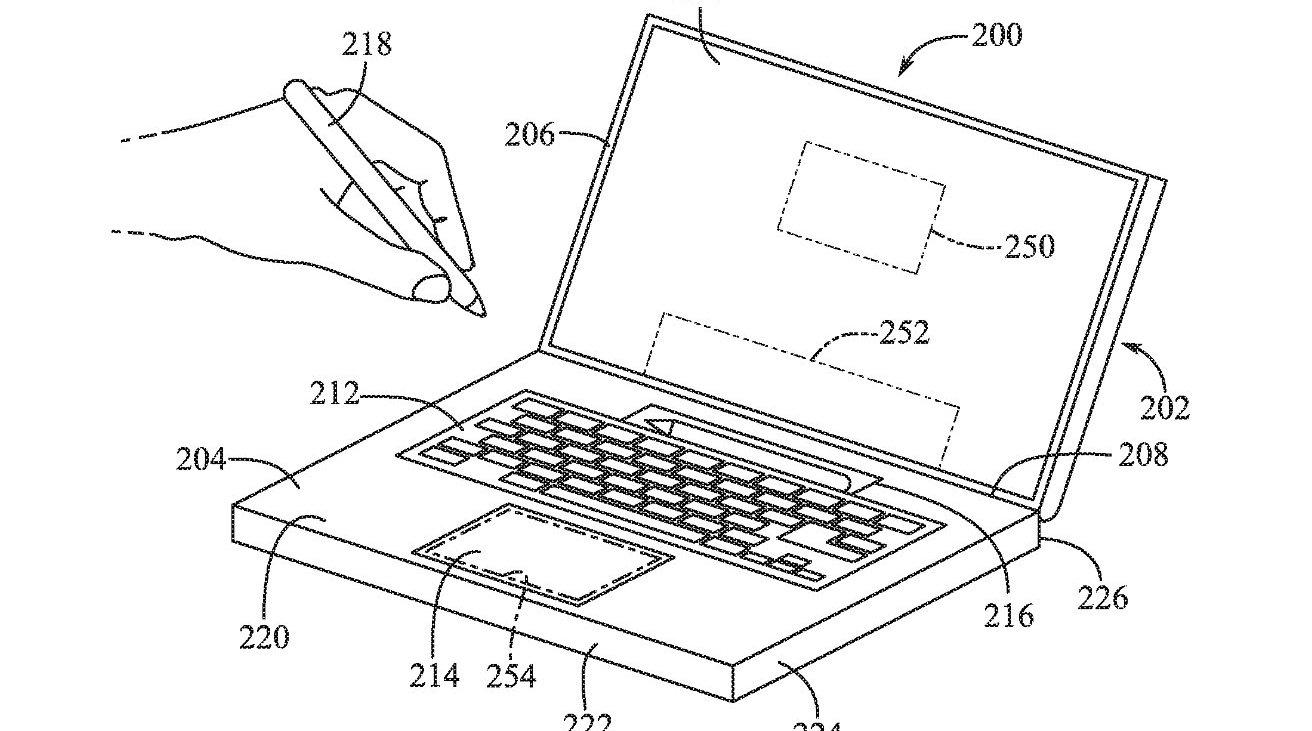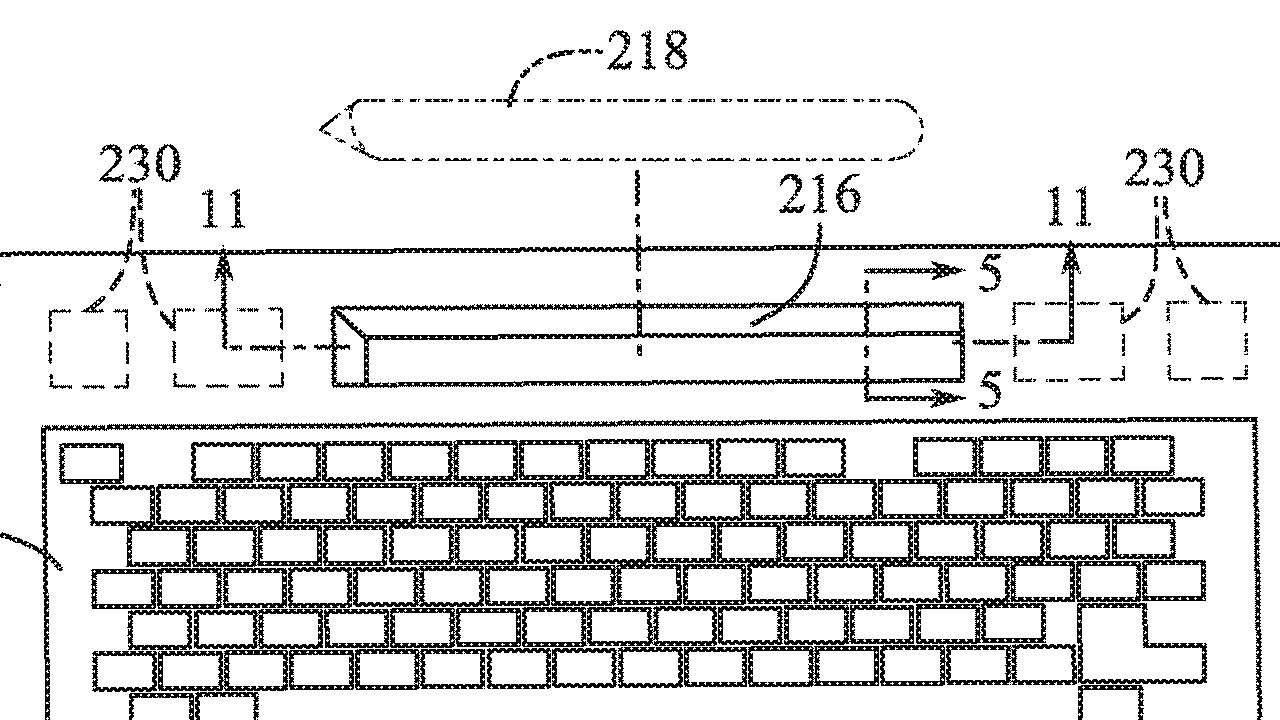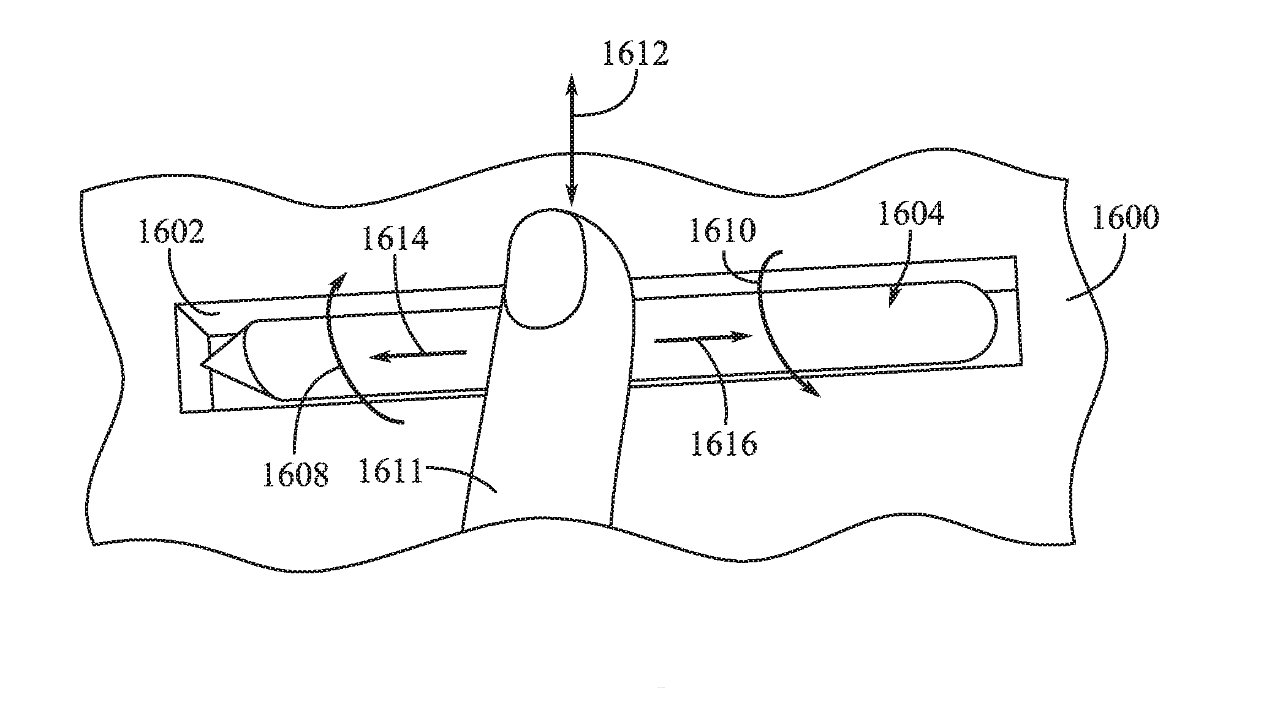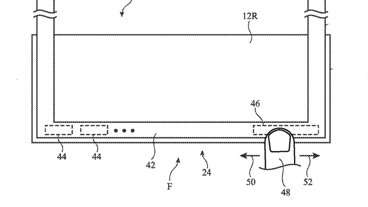Apple keeps researching how to have the iPad-centric Apple Pencil do the work of the old Touch Bar on the surface of a future MacBook Pro.
It's just a patent application and not only may one of those not be granted, it may not ever lead to an actual product if it is. Except this patent application made public on May 9, 2024 is an expansion of a series of previous ones — including some that have actually been granted.
So this is not a skunkwork project by a few Apple people, it is a project that at least was under continuous development. Mildly hidden under the dull title of "Mountable tool computer input," it's really about how an Apple Pencil could be used with a MacBook Pro.
That sounds as if it obviously means how it could be used to draw and write on a MacBook Pro screen. But perhaps with a mind to Steve Jobs's famous criticism of how "you have to get 'em, put 'em away, you lose 'em, yuck," it is more about storing the Apple Pencil.
There's a chance that Apple is only thinking of a MacBook Pro for very tidy people, as just like the previous versions of the patent application, this new one talks of people having a separate device for drawing on.
"[Some] computing devices, such as laptop computers, can have a touch screen positioned in or adjacent to a keyboard of the device that can be configured to provide many more functions than a set of traditional keys," begins the patent.
"However, an ancillary touch screen can be difficult to use in some cases," it continues. "Touch typists may dislike using the touch screen because it lacks tactile feedback as compared to a set of mechanical, moving keys."
Specifically, that they use the Pencil in at least roughly the area where Apple used to include a Touch Bar.
"The touch screen is also generally positioned near the user's hands and therefore may be prone to being obscured from the user's vision by their own hands," says the patent. "Also, even when the user looks at the touch screen, it is positioned at a different focal distance from the user as compared to the main display, so the user must readjust their head or eyes to effectively read and interact with the touch screen..."
It's a wonder Apple ever bothered with a Touch Bar. Yet the company wants to do something with that space, and it persists. The Bar may be replaced by a touch panel.
"The touch panel may include a touch-sensitive surface that, in response to detecting a touch event, generates a signal that can be processed and used by other components of the electronic device," continues Apple. "A display component of the electronic device may display textual and/or graphical display elements representing selectable virtual buttons or icons, and the touch sensitive surface may allow a user to navigate and change the content displayed on the display screen."
None of this would immediately seem to fix Apple's criticisms of the Touch Bar. A user would have to break off typing, look for the Pencil to pick it up out of the holder, then write or tap with it on the touch sensitive strip.
A stylus may be more natural than a Touch Bar
Yet that is more natural than the Touch Bar. While it stops the user typing, it feels more natural to look away from the screen to find the Pencil.
And rather than trying to remember a control that is a small spot on the Touch Bar — which also moves — then picking up a Pencil is a lot easier.
There is one more thing, though. In a few patent drawings, a user is shown tapping on the Pencil, or touching it, or swiping across it.
The Apple Pencil could then show Touch Bar-like controls while it's in the holder.
This patent application, like its previous granted versions, is credited to Paul X. Wang, Dinesh C. Mathew, and John S. Camp. Wang is listed on many previous patents for Apple, including more on user input devices.
 William Gallagher
William Gallagher






-xl-m.jpg)


-m.jpg)






 Thomas Sibilly
Thomas Sibilly
 Wesley Hilliard
Wesley Hilliard
 Christine McKee
Christine McKee
 Amber Neely
Amber Neely

 Malcolm Owen
Malcolm Owen

 Mike Wuerthele
Mike Wuerthele








18 Comments
I never liked the Touch Bar but this seems to throw away its better bit (you could see what it was supposed to do as it changed). Now, we swap the extra tap to wake it up before it will do anything for extracting an Apple Pencil from that awkward corner between keyboard and display. Then we tap/draw in an unlabelled space?
I'm not convinced. Part of the Touch Bar's downfall was that it didn't do anything that standard macOS features ('cos not everyone has a Touch Bar) didn't do at least as well: I can't see this being any different.
OR
this is for the next generation Magic Keyboard for the iPad.
I really liked the touch bar, especially the sliders for adjusting volume and brightness.
For me function keys are completely useless and never used.
Like the control key; function keys are only necessary for Windows compatibility.
I think the main issue with the Touch Bar was its location. Apple’s insistence that Macs never have touch screens ties their hands behind their back when it comes to finding UI real estate to incorporate new interactive controls. Using the Touch Bar required taking your eyes off the screen and looking down, which breaks some people’s workflow. Since Apple wasn’t opposed to this disruption they could have simply incorporated smart controls into a glass trackpad in some manner.
Apple’s trackpads are unusually large. It’s conceivable that certain regions of their massive trackpad could be used on-demand and in an app-centric context to place additional controls directly on the trackpad, e.g., a vertical or horizontal slider/fader along an edge of the trackpad that would pop up when the user selects an on-screen control that requires a variable value. Using the trackpad as both a control and display surface may make sense, or it might be a complete disaster, i.e., Touch Bar Fail v2.0.
I’m actually not trying to suggest any kind of UI concept, all I’m saying is that Apple has painted themselves in a corner by insisting “fingers off” when it comes to the primary display surface. Adding a secondary display surface with touch by eliminating the function keys didn’t work out so well in the long run. Doing something similar with the trackpad may be a repeat of that previous failure.
Popping up touch controls, fully in-context with an app’s workflow, directly on the screen and within the un-averted sight lines of the user, is an obvious solution to the problems the Touch Bar was trying to solve. I hate fingerprint smudges as much as anyone does, and I’ll never like typing on glass, but how many more crazy ways of dancing around the “no fingers on the screen” edict will Apple have to come up with before they finally admit that the obvious solution is probably the right solution?